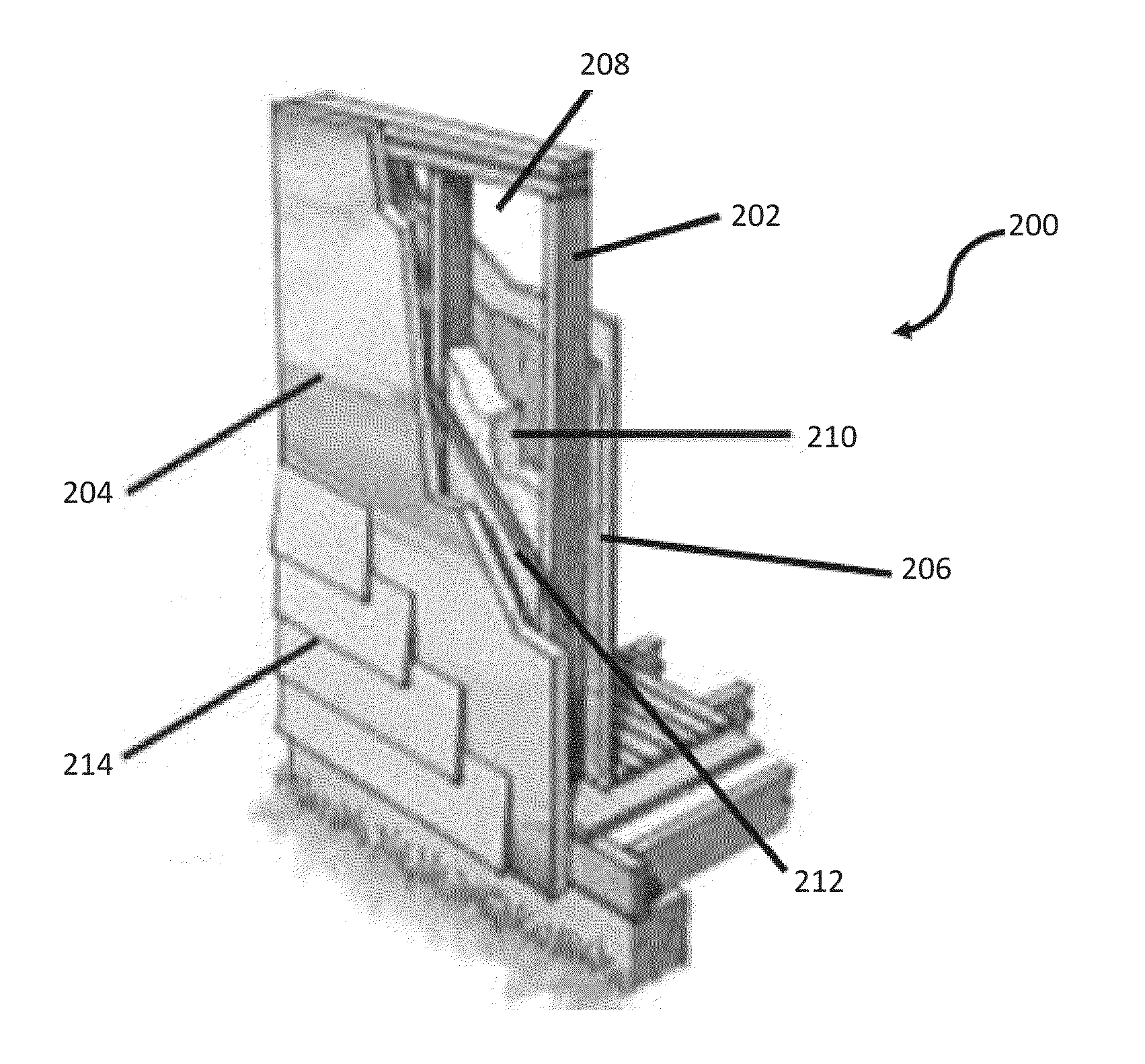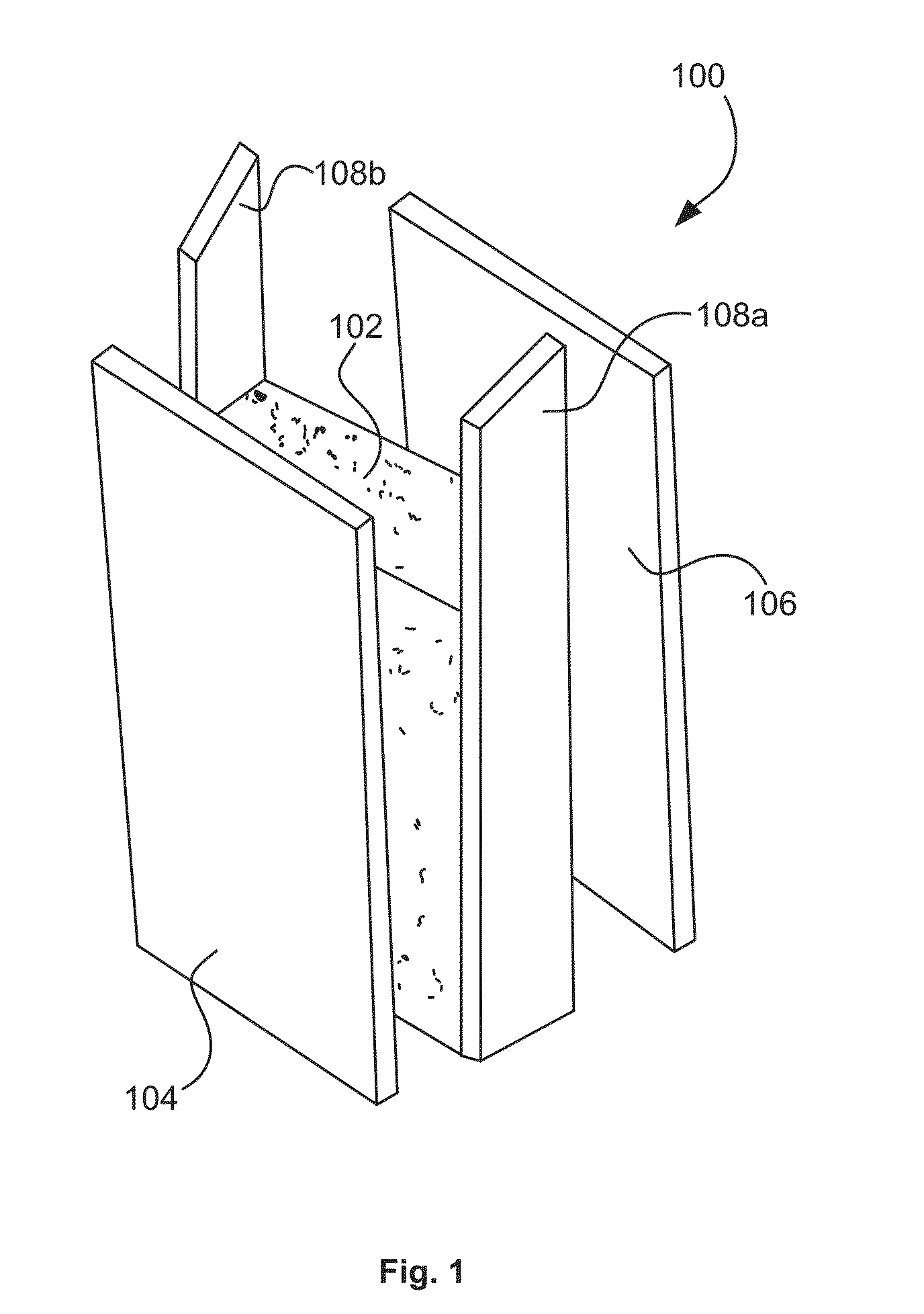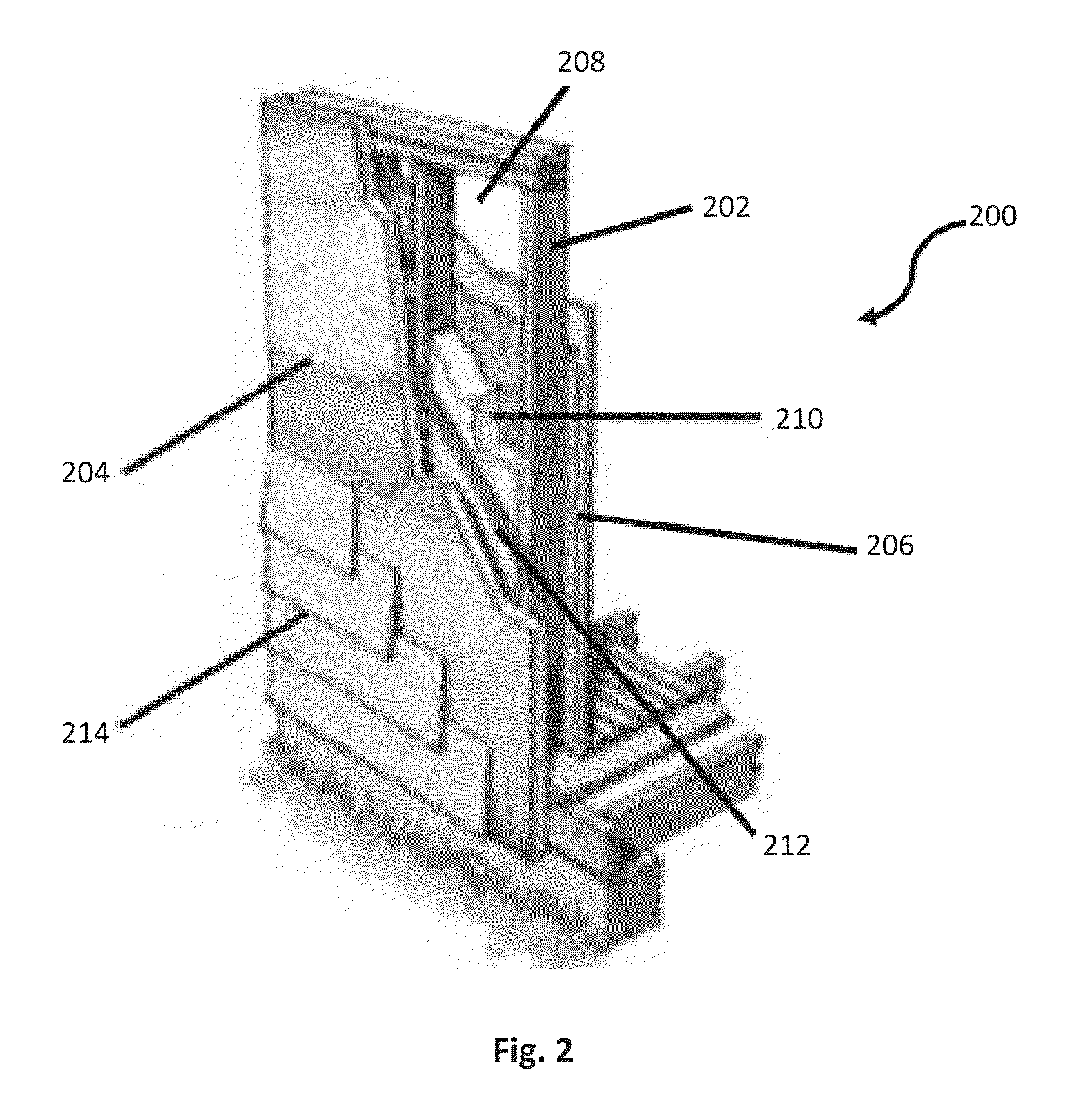Open and closed cell polyurea foams
a closed cell, polyurea foam technology, applied in the direction of heat-proofing, walls, building components, etc., can solve the problems of adding cost and complexity to the installation process, strict limits on such characteristics,
- Summary
- Abstract
- Description
- Claims
- Application Information
AI Technical Summary
Benefits of technology
Problems solved by technology
Method used
Image
Examples
example 1
[0056]Spray foam TST-NU was made from a B-side formulation that includes no reactive hydroxyl groups. For example, the B-side formulation does not include any brominated polyol. As a result of not having any reactive hydroxyl groups, the spray foam that results cannot include urethane and should be a polyurea. As a comparison, spray foam TST-NU+sucrose has the same B-side formulation as TST-NU, except for the addition of 28 parts per weight sucrose.
[0057]The resulting spray foams were analyzed with FTIR, as shown in FIG. 4. FIG. 4 shows wavenumbers in the urethane and urea region. The FTIR spectrum for TST-NU is denoted by line 402, while the FTIR spectrum for TST-NU+sucrose is denoted by line 404. As can be seen from FIG. 4, no significant difference was observed between the two spectra. As previously noted, TST-NU had no reactive hydroxyl groups and thus cannot react with polymeric MDI to form a urethane. As a result, the spectrum for TST-NU showed the presence of urea and not ure...
example 2
[0058]A polyurea foam was made from a B-side formulation containing sucrose, similar to TST-NU+sucrose. Foam was submerged in water to extract soluble and unbonded components from the foam. The water extract was analyzed in FTIR. Results for the water extract FTIR are shown in FIG. 5 as line 502. As a control, sucrose was analyzed by FTIR. The sucrose spectrum is shown as line 504. Line 502 and line 504 show significant overlap. The spectra indicated that the water extract from the polyurea foam contains sucrose. Because water was able to extract sucrose from the polyurea foam, sucrose was shown to not be bonded to polyurea.
example 3
[0059]Spray foam TST-2 was made from a B-side formulation containing a brominated polyol and hydroxyl-containing reactive catalysts. A brominated polyol has hydroxyl groups that will react with polymeric MDI and form a polyurethane. TST-2 includes 6 parts brominated polyol along with 28 parts sucrose and 20 parts water in 100 parts of the B-side formulation. Based on the amount of brominated polyol, the TST-2 foam would be unlikely to contain only polyurethane. As a comparison, spray foam TST-2 no sucrose was made from a B-side formulation identical to the B-side formulation for TST-2 except that no sucrose was included. TST-2 and TST-2 no sucrose films were analyzed by FTIR, and the resulting spectra are shown in FIG. 6.
[0060]FIG. 6 shows wavenumbers in the urethane and urea region. The FTIR spectrum for TST-2 no sucrose is denoted by line 602, and the FTIR spectrum for TST-2 is denoted by line 604. As can be seen from FIG. 6, no significant difference was observed between the two ...
PUM
| Property | Measurement | Unit |
|---|---|---|
| weight percent | aaaaa | aaaaa |
| density | aaaaa | aaaaa |
| density | aaaaa | aaaaa |
Abstract
Description
Claims
Application Information
 Login to View More
Login to View More - R&D
- Intellectual Property
- Life Sciences
- Materials
- Tech Scout
- Unparalleled Data Quality
- Higher Quality Content
- 60% Fewer Hallucinations
Browse by: Latest US Patents, China's latest patents, Technical Efficacy Thesaurus, Application Domain, Technology Topic, Popular Technical Reports.
© 2025 PatSnap. All rights reserved.Legal|Privacy policy|Modern Slavery Act Transparency Statement|Sitemap|About US| Contact US: help@patsnap.com



